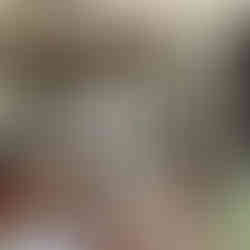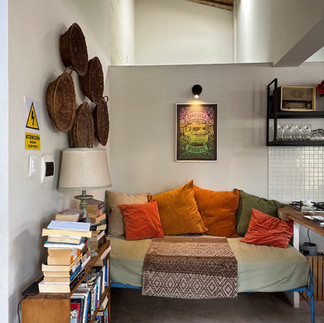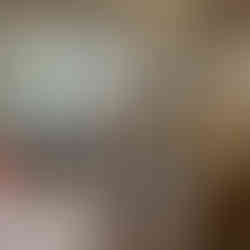Huaran, Cusco

Gabriel Battaini’s instagram profile pretty much sums him up: “Argentinian by birth, Peruvian at heart. Designer by soul. Frustrated architect.”
We met Gabriel at his café, Viva Peru, in Huaran. From there, we walked up the road to a river that led to a dirt path lined with tall adobe walls. Behind these walls, many homes were designed and built by Battaini. At the end of the path, we arrived at his house. Made with local materials—stone, adobe, and wood—the dwelling harmonized with the natural surroundings.
Huaran, located 20 minutes north of Urubamba’s main plaza, has become an enclave for Limeños and foreigners. We discussed Gabriel's journey into "slow living."
So, how did you end up in Peru?
I was in Argentina during the early 2000s when there was a significant devaluation. Most of my friends went abroad, mainly to Europe because of dual citizenship. At the time, I was running a bar with some friends. One day, the owner asked me, "You studied hotel management, right?" I replied, "Yes." He then mentioned that he had a friend building a hotel in the Sacred Valley of Peru and was looking for an Argentinian to manage it.
Was the friend Argentine or Peruvian?
Antonio Belutini was Italian but arrived to Peru when he was four years old. He must be around 80 years old now. He’s from Arequipa. When he came to Buenos Aires, he met with me and offered me a job for when the hotel was finished being built. He said he would be in touch. In those days, the internet was slow, and you had to connect via a telephone landline. Several months later, I received an email from him.
What year was this?
It was 2003.
So, 21 years ago.
Huaran didn’t even exist on the map. I had no idea where I was going. In 2004, I got an email from Antonio to come. I left my life in Buenos Aires and arrived in Huaran for a six-month trial.
I hated the first three months. I lived in the hotel, and my life revolved around this hotel in the middle of nowhere. I thought, "This is the worst decision I’ve made in my life." Imagine, I was 24 years old, dropped into this remote village that had nothing—not even a telephone. Forget the internet. Back then, the only place to connect was at an "internet café" in Urubamba. They had a row of bulky computers that you would rent by the minute to get online. That was it. That was my big outing for the week.
At the hotel, we had a satellite phone that Antonio had for the hotel. It was the only phone in the village. It became the community phone. If it rang and you answered it, often it was a call for a local villager. You’d say, "Call back at 4 PM," and then you had to go look for that person. They’d come to the hotel and sit by the phone until 4 PM. So, I thought, "What the hell am I doing here in the middle of nowhere in the prime of my life?" Outside of the hotel, I didn’t know anyone.
Was there an expat community here yet?
No. Zero. So, I said I’d stick it out for the six months and then split. But at the three-month mark, my attitude started to change. The hotel began sending me to Cusco to meet other people in tourism and interact more with locals. I started to make friends. On weekends, when I had time off, I’d go to Cusco, which I adored. Suddenly, I realized I was loving this lifestyle without the need for constant consumption. I was enjoying things like gardening and reading books. I had never read books before.

What we now call “slow living.”
Exactly. I loved slow living.
So at your third month, you changed your chip — you entered into a sort of a meditation.
Yes. I found pleasure in the slow lifestyle. The Belutinis were also part of the package—they were adventurers. They always invited me to join them for kayaking, trekking, camping, and exploring unbeaten paths. Then in November, I met Brian. He showed up at the hotel while traveling. An Englishman, he had just finished a one-year retreat at a Buddhist center and had sold everything he owned in England: his business, apartment, everything. He grabbed a backpack and planned to travel the world, with Peru as his first stop.
Is he still here?
He is still here. We were together 14 years. He is like my family. We are still good friends.
So what happened next?
I stayed on with the Belutinis, but one thing became clear—I didn’t want to work and live in the hotel anymore. So, Brian and I began looking for a place to live. At that time, all the houses in Huaran were really rudimentary. We rented a small adobe house off the main road that was almost a shack. It barely had a roof and no bathroom. The owner, Elias, made a deal with us: we would completely remodel the house in exchange for discounted rent. We added a lovely room on the second floor, which became our bedroom.
You and Brian basically paved the path in Huaral for future expats.
That was our first house. Soon after, I left the Belutinis' hotel, and Brian and I took a sabbatical year to travel. Eventually, we realized our money was running out, and we needed to do something. We looked for land around Cusco in more established areas like Pisac, Lamay, Calca, and Ollantaytambo, but nothing felt right. Then, one day while walking around Huaran, we found land next to a river and thought, “This is it.” At first, I was hesitant because Huaran was not on the map for tourists, but Brian said, “If you do something cool, people will come.”
So we went for it. Brian wanted to offer an experience similar to his Buddhist retreat, blended with a community garden for the guests to work on. From my perspective as a hotel manager, I didn’t want to mix business space with personal space.
We ended up creating The Greenhouse Bed & Breakfast. When we were almost finished, we ran out of money. Brian went back to England to work and gather some cash to pay for the completion. At the time, there were only a handful of hotels in the Sacred Valley. I opened The Greenhouse while Brian was still working in England. Two months after we opened, the project took off. It was a huge and immediate success. I called Brian and said, "You have to come back because I can’t manage on my own."
The Greenhouse became one of the most popular bed and breakfasts. We were number one on TripAdvisor for eight years—number one in South America and number two in the world. The Sun newspaper from England came to interview us. The Greenhouse exploded.
The project exceeded our expectations. It was a very beautiful venture, and we met incredible people. The Greenhouse was amazing, but it also had its cycle. When we started in 2006-2007, there was nothing, so people stayed because they had nowhere else to go and nowhere to eat. I loved to cook, so I started making dinners with a fixed menu: starter, main course, and dessert. We were hands-on, cooking and cleaning the hotel ourselves. People began coming not just for the place, but because they were fascinated by our story. On TripAdvisor, everything was about “Gabriel and Brian and the dogs.”
You guys created a community.
Totally. But it was a double-edged sword because we never had any time for ourselves. It became overwhelming because the guests always wanted to sit with us and talk. It started to feel like a broken record.

So you guys were part of the show.
Absolutely. And we knew it and worked it. For the first few years, it was great, but then it got stale. When I started to feel bitter, I realized it was time to close up shop.
We put The Greenhouse up for sale. Even that was hard because so many people loved the project and said we were the soul of the hotel. Eight years after we opened, Kelly showed up from New York and bought The Greenhouse. She had no idea about the hotel business or even Peru; she just wanted to change her life. She took over The Greenhouse, and it did change her life. She maintained the number one spot on TripAdvisor.
Do you know something about Feng Shui?
Not much.
I was just wondering what’s the Feng Shui of the Greenhouse. It must be good… (laughs)
Maybe... yeah. The Greenhouse really did change her life. We are great friends; she’s like a sister. She ended up meeting a French guest, falling in love, and getting married. She now lives in France.

Lovely story.
Yes. They have a son now, and they run a bed and breakfast in Bordeaux. She misses The Greenhouse a lot, though. I do too, in fact. It was hard to separate from it, but we made so many amazing friends from all over the world that wherever we go, we have a home to arrive at. I am still in touch with many guests we met years ago.
In fact, some guests fell in love with their stay in Huaran so much that they ended up looking for places to stay long-term. That’s why if you walk around the area now, it’s full of cute homes and gardens owned by locals because there’s now a market for rentals to expats. In many cases, they copied our scheme: remodeling adobe homes in exchange for discounted rent. At the end of the contract, the owner got a spruced-up home.
What a good way to merge cultures.
That’s how Huaran developed into what it is today. Many of these houses are owned by locals but were remodeled by expats.
Let’s back up… you studied hotel management… but where did your architectural talent come from.
Before studying hotel management, I actually wanted to study architecture. However, we were tight financially as my father had passed away a few years earlier, and architecture was an expensive degree to pursue. When I arrived in Huaran to work at Antonio’s hotel, his wife Ani, who loved architecture and design, taught me a lot. She was constantly expanding, renovating, and decorating the hotel. She put me in charge of supervising the work, and that's where I learned about local materials and craftsmanship.
When we designed The Greenhouse, I drew everything on paper, and a local architect plotted it. Soon, neighbors started asking for my help to renovate their houses. Elias, our landlord, did the construction. He now owns eight houses that we renovated together. In fact, he named his younger son Gabriel after me. We grew together, experimenting with mixing materials and learning a lot from each other.
The Greenhouse was my first big project, and it set the path for everything that followed.


Architecture and design is everything for a hotel — it sets the stage and the mood.
Exactly. And remember, in the early 2000s, there was nothing out here. No Saga Falabella, no department stores—nothing. So, everything had to be handmade. A decade later, I look at all the details and craftsmanship of The Greenhouse and still enjoy its beauty.
It’s 2024. Now you have a cute, quaint little cafe — Viva Peru Cafe. How did you end up here?
While we had The Greenhouse, we bought the neighboring piece of land. For a long time, we just had a vegetable garden there. When we sold The Greenhouse, we decided to build Greenhouse Villas on that land. It would provide us with an income but be less demanding. Airbnb had just started, and Brian was very visionary. Sure enough, the Villas took off—even Ed Sheeran stayed at one of them. Again, it was a success. However, I missed having a local hangout spot, which The Greenhouse essentially was. That's how the idea to open the café came about. Many people thought I was crazy because there wasn’t much going on in Huaran. “Who is going to go to Huaran for a coffee?” But Brian’s philosophy stuck with me: “If you make something cool, people will come.”
Now it is the “point.” And with the best carrot cake and pulled pork sandwich!
Yes, people literally come here to meet and hang out. Now that Amazon delivers to Peru, I’m like the local post office—people send their packages here. So that was the transition: from The Greenhouse B&B to the Villas to Viva Peru Café. Then, Brian and I separated.

One door closed, but another opened.
Yes, but after 13 years, it was hard. I didn’t know what to do. We had built everything together. That’s when I decided I had to leave. We both lived in this tiny village, Huaran.
I moved to Lima. Brian stayed with the house, the dogs, and the Villas. I ran Viva Peru Café from a distance. Then the pandemic came. Surprisingly, despite the lack of tourism, we did well with the Villas and Café because there was an influx of Limeños who fled to the countryside.
Yes, everyone wanted to escape the draconian restrictions in Lima.
I actually stayed in Lima with Roberto. We were living together in Barranco. I met him in 2019.
As soon as the notaries reopened in June 2020, we sold the Villas to a client who fell in love with Huaran. By early 2021, I wanted to go back to Huaran. It was hard for Roberto—he's a city boy and well-known in Lima. He’s an architect with a thriving studio there. Ironically, in the Sacred Valley, I’m the well-known “architect,” and the area is full of houses designed by me.
He still works in Lima, but he also needed his own project here. Forty is his baby. It’s called Forty because it was conceived when we were on holiday in Argentina for his 40th birthday.
How was living in Lima after two decades in the Sacred Valley?
Well, it wasn’t so shocking because I met Roger in Cusco many years ago, and he is from Lima. He is one of my best friends, and he introduced me to his friends and life in Lima. In the end, I made many great friends and met Roberto. I have very fond memories of my time in Lima.
Then the mountains called you back.
Yes.

Where are your favorites places to hang out at locally?
I don’t know if I’m just lazy, but I love being at home or going for long walks.
I also love to garden. It’s really difficult to get me out of here. Roberto has tried to convince me to move back to Lima because most of his work is there.
Has he made the switch like you towards “slow living?”
He can get bored here, but if he has work, he is happy. In fact, it’s the same for me in Lima—I get bored there unless I have work.
Lima lacks the nature to unwind you.
Exactly. I love Lima, but not to live there full-time.
Where are your favorite spots in Cusco?
There are lots of small, cute spots. There’s a bakery I love called XYZ. I enjoy going there for a coffee. Roberto and I just finished our first joint project—a bar and restaurant called The Library and Micaela. They turned out really great.
And in Lima?
The first thing I do when I arrive is eat ceviche. If I’m in Barranco, I’ll go to El Muelle. It’s half a block from our house, so I go there for convenience.
I love Barranco, and Roberto does too. I also love a place called Caleta Dolsa.
Me too. That’s my main coffee spot.
I love their concept.
What are you optimistic about in the future?
We’ve got lots of great projects lined up. We’re going to build our own house together up in Charan, about a seven-minute drive from here. Roberto’s restaurant, Forty, is really taking off.
You guys seem to have the best of both worlds—Huaran and Barranco. Thank you for your time and for opening up your space to us. I really enjoyed hearing your story.












コメント